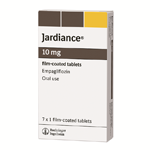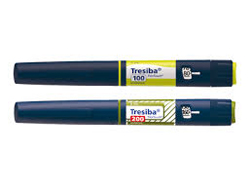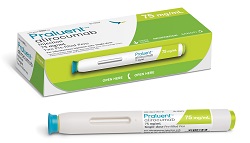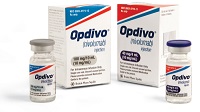Last year, FiercePharmaMarketing brought you a list of 8 markets to keep an eye on--including some bracing for next-gen entrants. One year later, those newcomers are here, and they're shaking things up as expected.
In some of those fields, though, the battle is still in the early stages. Take PCSK9, for example, where Amgen ($AMGN) and the Sanofi ($SNY)/Regeneron ($REGN) team have struck a series of exclusive payer deals. Those reimbursement pacts simply laid the groundwork for an all-out war to come. The real fun is only getting started.
Other therapy areas are still expecting the kind of boat-rocking approvals that last year held for cholesterol. Multiple sclerosis and insulin drugmakers, to name a couple, will have to welcome more new competitors into the fold next year.
Taking all of that into consideration, we've brought you a rundown of the top pharma markets to keep tabs on this year. And if there's one you think we missed, be sure to let us know.
Multiple Sclerosis
If all goes according to plan, Roche ($RHHBY) will file MS candidate ocrelizumab for global approvals early in 2016--seeking a go-ahead in primary progressive multiple sclerosis, which now has no approved treatments. But a green light won't just give Roche an advantage in that form of the disease. The "reflex opinion" that the med is a better version of Biogen's ($BIIB) Tysabri, a standby in advanced relapsing remitting multiple sclerosis, "could be under-selling the opportunity," Bernstein analyst Ronny Gal pointed out this summer. Roche's entrance into that market will ramp up payer pressure, too, he predicts; more choices mean more opportunities to put the formulary squeeze on drugmakers. And that means if generic drugmakers eager to copy Teva's ($TEVA) long-acting version of Copaxone succeed with a recently instituted patent review, it won't just be the Israeli drugmaker feeling the pain.
SGLT2
 Earlier this year, Eli Lilly ($LLY) and Boehringer Ingelheim's Jardiance became the first diabetes drug to show it could reduce the combined risk of heart attack, stroke and death from cardiovascular causes--doing so by 14% in a study of high-risk Type 2 diabetes patients. But the companies are waiting on a few events--which could happen in 2016--that could help Jardiance pull ahead of its peers. First off, the drugmakers need the FDA to add that data to the drug's label, so that reps can more freely tout it. That could help it get a leg up on the other members of its class, Farxiga from AstraZeneca ($AZN) and Invokana from Johnson & Johnson ($JNJ). Meanwhile, decisions by bodies like the American Diabetes Association to update their guidelines on SGLT2 use could boost the entire group, Farxiga and Invokana included. Farther down the line, payers may begin making moves to favor Jardiance or SGLT2s on their formularies. Either way, the diabetes community will get some highly anticipated results early next year, when Novo Nordisk ($NVO) will roll out CV data on its GLP-1 med, Victoza. That's when industry watchers will know whether the GLP-1 class can match SGLT2s' advantage--or whether Jardiance and co. will be using it against them.
Earlier this year, Eli Lilly ($LLY) and Boehringer Ingelheim's Jardiance became the first diabetes drug to show it could reduce the combined risk of heart attack, stroke and death from cardiovascular causes--doing so by 14% in a study of high-risk Type 2 diabetes patients. But the companies are waiting on a few events--which could happen in 2016--that could help Jardiance pull ahead of its peers. First off, the drugmakers need the FDA to add that data to the drug's label, so that reps can more freely tout it. That could help it get a leg up on the other members of its class, Farxiga from AstraZeneca ($AZN) and Invokana from Johnson & Johnson ($JNJ). Meanwhile, decisions by bodies like the American Diabetes Association to update their guidelines on SGLT2 use could boost the entire group, Farxiga and Invokana included. Farther down the line, payers may begin making moves to favor Jardiance or SGLT2s on their formularies. Either way, the diabetes community will get some highly anticipated results early next year, when Novo Nordisk ($NVO) will roll out CV data on its GLP-1 med, Victoza. That's when industry watchers will know whether the GLP-1 class can match SGLT2s' advantage--or whether Jardiance and co. will be using it against them.
Insulin
 For a long time now, Sanofi has dominated the basal insulin market with blockbuster med and franchise anchor Lantus. And things looked good for the French drugmaker when it won FDA approval for a new, patent-protected follow-up med, Toujeo. But things are changing--and fast. For one, Novo Nordisk at long last won FDA approval for its own contender, Tresiba, late this year; the drug made a comeback after suffering a 2013 rejection from U.S. regulators, who asked Novo for more data on potential heart health risks. Analysts expect that med to break the blockbuster barrier, and some of those sales would come at Toujeo's expense. And come 2016, another contender will hit the scene, Sanofi and Novo recently learned. Earlier this month, the FDA green-lighted Eli Lilly and Boehringer Ingelheim's Lantus biosimilar, Basaglar, which the pair began rolling out in Europe this fall. In the U.S., they'll have to hold off on their launch until a date agreed upon in a recent patent settlement: after Dec. 15, 2016. Meanwhile, Sanofi's diabetes forecast is already bleak, in part thanks to the anticipated Toujeo performance. In early November, new CEO Olivier Brandicourt said pressure on the diabetes unit would drag on Sanofi's financial performance through 2018.
For a long time now, Sanofi has dominated the basal insulin market with blockbuster med and franchise anchor Lantus. And things looked good for the French drugmaker when it won FDA approval for a new, patent-protected follow-up med, Toujeo. But things are changing--and fast. For one, Novo Nordisk at long last won FDA approval for its own contender, Tresiba, late this year; the drug made a comeback after suffering a 2013 rejection from U.S. regulators, who asked Novo for more data on potential heart health risks. Analysts expect that med to break the blockbuster barrier, and some of those sales would come at Toujeo's expense. And come 2016, another contender will hit the scene, Sanofi and Novo recently learned. Earlier this month, the FDA green-lighted Eli Lilly and Boehringer Ingelheim's Lantus biosimilar, Basaglar, which the pair began rolling out in Europe this fall. In the U.S., they'll have to hold off on their launch until a date agreed upon in a recent patent settlement: after Dec. 15, 2016. Meanwhile, Sanofi's diabetes forecast is already bleak, in part thanks to the anticipated Toujeo performance. In early November, new CEO Olivier Brandicourt said pressure on the diabetes unit would drag on Sanofi's financial performance through 2018.
PCSK9
 Sanofi and Regeneron's Praluent and Amgen's Repatha started going head-to-head in the cholesterol market after winning approval in the latter half of this year. Part of that battle has been winning favor with payers, who have pit the drugmakers against one another to extract discounts--a tactic they learned when Gilead Sciences ($GILD) and AbbVie ($ABBV) squared off with new-age hepatitis C combo drugs. In the latest reimbursement deal, UnitedHealth ($UNH) chose Praluent as its preferred weapon for treating superhigh LDL cholesterol; less than two weeks before, the drugmakers worked out a similar deal with the company's Oxford unit, which covers patients in the Northeast. That's not to say Amgen's contender hasn't scored its own victories, though. It has a formulary exclusive with PBM giant CVS Health ($CVS), which it nabbed by offering to tie Repatha's price to its effectiveness. It has an performance-based arrangement with Harvard Pilgrim Health System, too. And what about Express Scripts ($ESRX), the PBM leader? It's agreed to offer both Praluent and Repatha on its formulary in exchange for discounts on both.
Sanofi and Regeneron's Praluent and Amgen's Repatha started going head-to-head in the cholesterol market after winning approval in the latter half of this year. Part of that battle has been winning favor with payers, who have pit the drugmakers against one another to extract discounts--a tactic they learned when Gilead Sciences ($GILD) and AbbVie ($ABBV) squared off with new-age hepatitis C combo drugs. In the latest reimbursement deal, UnitedHealth ($UNH) chose Praluent as its preferred weapon for treating superhigh LDL cholesterol; less than two weeks before, the drugmakers worked out a similar deal with the company's Oxford unit, which covers patients in the Northeast. That's not to say Amgen's contender hasn't scored its own victories, though. It has a formulary exclusive with PBM giant CVS Health ($CVS), which it nabbed by offering to tie Repatha's price to its effectiveness. It has an performance-based arrangement with Harvard Pilgrim Health System, too. And what about Express Scripts ($ESRX), the PBM leader? It's agreed to offer both Praluent and Repatha on its formulary in exchange for discounts on both.
Multiple myeloma
November was a big month in the multiple myeloma space, which saw three new FDA approvals in Johnson & Johnson's Darzalex, Bristol-Myers Squibb ($BMY) and AbbVie's Empliciti, and Takeda's Ninlaro. Those go-aheads have heated up the competition at multiple stages of the myeloma treatment continuum. Empliciti, for one, is approved for patients who've already tried between one and three other therapies, but it remains to be seen whether payers may urge doctors to relegate the pricey therapy strictly to third-line use. There, it would enter an already fierce battle between Amgen's Kyprolis and Celgene's ($CELG) Pomalyst, which have been duking it out in that setting. Darzalex is preparing to square off against Pomalyst in patients who've received at least three prior treatments; with a list price of $135,550 for the first year, it's set to undercut the $147,302 Celgene drug. Earlier in treatment will come Ninlaro, the follow-up to the Japanese drugmaker's blockbuster Velcade. The once-weekly pill is approved for use with Revlimid and dexamethasone for patients who have received at least one prior therapy.
Psoriasis
The psoriasis market got a major disrupter earlier this year, when Novartis ($NVS) won approval for next-gen therapy Cosentyx. Next year, though, Cosentyx could face a couple of fellow disrupters in that department. Eli Lilly is gunning for an approval for its candidate, ixekizumab, which blocks a cytokine called interleukin-17A. But perhaps most-watched will be brodalumab, a psoriasis prospect that recently changed hands. After reports of suicidal thoughts turning up in trial patients, Amgen bailed on its collaboration with AstraZeneca on the drug; the British drugmaker later sold its rights to Valeant ($VRX), which hoped to boost its skincare portfolio with the biologic. With Valeant in the hot seat for pricing and specialty pharmacy relationships, a brodalumab launch will get plenty of attention. A couple of other Big Pharma rivals are working through Phase III with their own therapies, too: Merck & Co. boasts IL-23-blocking tildrakizumab, and Johnson & Johnson is taking guselkumab through the clinic.
PD-1/PD-L1
 Merck ($MRK) and Bristol-Myers Squibb have been fighting all year for market share with their respective checkpoint inhibitors, Keytruda and Opdivo. While Keytruda was the first to get the regulatory go-ahead in melanoma, Opdivo has since leapfrogged it, winning fast approvals in non-small-cell lung cancer--where Keytruda later scored its own approval--and kidney cancer. As the two continue to duke it out, they may need to make room for a third immunotherapy in Roche's atezolizumab. That candidate has its own breakthrough designation in NSCLC, which it won back in February. But the Swiss drugmaker is also preparing to go where its rivals haven't gone yet. It's looking for an early approval in bladder cancer, where it nabbed its first breakthrough tag, and it has racked up positive data in triple negative breast cancer, too.
Merck ($MRK) and Bristol-Myers Squibb have been fighting all year for market share with their respective checkpoint inhibitors, Keytruda and Opdivo. While Keytruda was the first to get the regulatory go-ahead in melanoma, Opdivo has since leapfrogged it, winning fast approvals in non-small-cell lung cancer--where Keytruda later scored its own approval--and kidney cancer. As the two continue to duke it out, they may need to make room for a third immunotherapy in Roche's atezolizumab. That candidate has its own breakthrough designation in NSCLC, which it won back in February. But the Swiss drugmaker is also preparing to go where its rivals haven't gone yet. It's looking for an early approval in bladder cancer, where it nabbed its first breakthrough tag, and it has racked up positive data in triple negative breast cancer, too.